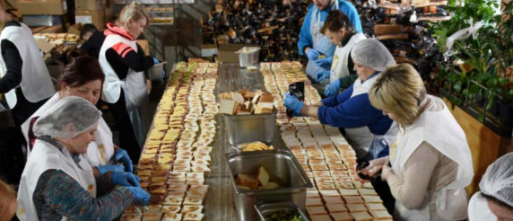Aside from an ongoing pandemic and supply chain issues, there's another pressing situation that's circulating the globe at a rapid rate: inflation.
The rate of inflation has surged around the world, primarily in the US, China and Germany. In the US alone, consumer prices rose 6.2% in October - the highest since 1990. In China, inflation rose 1.5% in the fall, while German inflation was 4.5% in September. According to China's National Bureau of Statistics, the Producer Price Index jumped 13.5% in October from a year ago. Also, that month, amid global supply chain shortages, China's Consumer Price Index rose 1.5%, which is twice the rate of the previous month and the highest increase since September 2020.
The United Nations Food and Agriculture Organization (FAO) has reported that global food prices have hit the highest level in over a decade. Prices have risen more than 30% in the last year, and this includes rising costs of cereals (22%) and vegetable oils globally. The price of wheat is up almost 40%. Supply chain issues are even impacting dairy products, with prices for those rising by almost 16% in the last year, according to FAO.
Experts blame rising costs for items like vegetables, gas and meat as contributing to the rise in consumer inflation around the globe. According to the US Bureau of Labor Statistics, the index for meats, poultry, fish and eggs increased 11.9% in October in the US, with the index for beef rising 20.1% and the index for pork rising 14.1%, its largest 12-month increase since December 1990.
Even the index for food away from home rose 5.3% over the last year. The index for limited-service meals rose 7.1% over the last 12 months, and the index for fullservice meals rose 5.9%, both the largest 12-month increases in 31 years. The index for food at employee sites and schools declined sharply over the past year, falling 45.4%. "Inflation is about money supply outpacing production," says Matthew Mabel, president of Surrender, Inc., a restaurant consultancy. "So far, inflation is actually working in favor (of restaurants and operators) because there is elasticity of demand when menu prices go up. The guest who is currently engaged shows little resistance. Per person averages (PPAs) are universally at an all-time high." However, Mabel adds: "Guest countsw are underperforming compared to the past, so my clients and I are starting to focus on that."
When it comes to supply chain issues - one of the root causes of rising inflation - Mabel believes these are temporary and he expects to see a return of production as well as a moderation in pricing next year, but not a full return to historical pricing. "My recommendation to my clients is to remind them that there is only one person who pays for anything in a restaurant and that is a guest,"he says.
Labor issues continue to be a challenge for the food industry, but there is an end in sight. "Workforce and labor costs are in a state of permanent change," he says. "it is getting to the point where there is little value in comparing labor cost from the past, only hours. We are in a period of adjustment, dealing with an issue that we will learn to conquer, like we always do, as an industry. My clients and I focus on strengthening education and training, so we take lowered hiring standards and still get the productivity, result and retention that is necessary."







